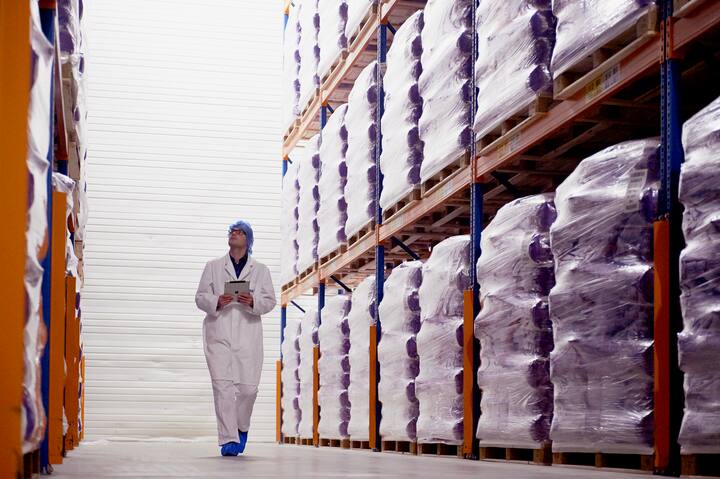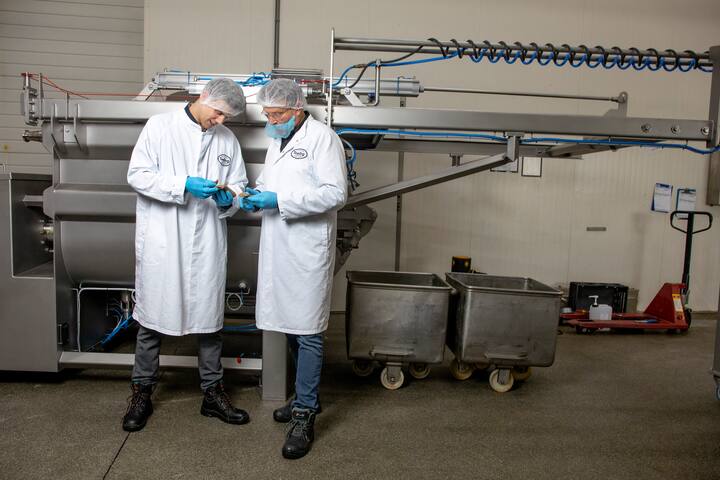
Leading in Setting up Quality Systems
Setting up a quality system
Want to ensure quality in your food-sector company? There are many different food safety and quality management systems, each suited to specific industries and company types. We help you identify the right system for your operations and support you in setting it up, something especially valuable given that food safety risks vary by sector.
Most customers in the food industry will expect you to comply with a recognised quality system. If your company is certified for a quality system, you can show that you have implemented the rules and requirements of the chosen quality system. This is necessary to comply with legislation and regulations. In addition, it demonstrates to the NVWA (Netherlands food and consumer product safety authority) and customers that your company is well organised. This allows you to produce food efficiently and safely.
Setting up a quality system at a glance
You are dealing with food safety and product quality
To guarantee this, there are quality systems
These can include overviews, process schedules, procedures, work instructions and registration forms
Together, we describe and support your production process
The difference between a food safety system and a quality management system
There are two types of quality systems: a food safety system and a quality management system. They are very similar, but there are some differences. For example, a food safety system contains requirements from legislation and the food code. The system focuses on describing processes and mapping food safety hazards. The system also contains the control of potential hazards. With the help of this system, your company can produce safely.
A quality management system is an extension of a food safety system. The system includes subjects such as management involvement and communication. These subjects are laid down in procedures and work instructions. When your company pays attention to these subjects, work will be done a lot more effectively and efficiently.
A suitable system for every company
GFSI standards | Other quality marks and standards |
|---|---|
Food and feed producers and processors: | HACCP |
MSC | |
BRCGS Food safety | Biologisch |
IFS Food | QS |
FSCC 22000 | Milieukeur / PlanetProof |
Glutenvrij | |
Storage, transhipment and distribution: | BRCGS Gluten-free |
Halal | |
BRCGS Storage and distribution | IKB |
IFS Logistics | Beter Leven |
Varken van Morgen | |
Food intermediary trade: | AIB International |
FDA-FSMA | |
BRCGS Agents and Brokers | GMP+ |
IFS Broker | ISO9001 |
ISO 22000 | |
Production of food packaging: | SimplyOk |
Kosher / Kosjer | |
BRCGS Packaging and materials | Label Rouge |
IFS PACsecure | Hygiënecodes |
Telers, kwekers en bewerkers van planten en AGF: | |
GlobalG.A.P. |
These services might also be of interest to you

Guiding certification

Mystery Guest

Sustainability advice and guidance
Leading companies in this service

Normec QA
Antwerpen Belgium
Do you want to create a safe and healthy working and living environment?
FAQ
Frequently asked questions
A quality system helps you meet legal requirements, ensure food safety and work efficiently. It's often mandatory for retailers and monitored by authorities like the NVWA.
That depends on your sector and operations. Examples include HACCP, IFS Food, BRCGS, and ISO 22000. We are happy to help you choose and set up the most suitable system for your business.
A food safety system focuses on identifying and controlling food hazards. A quality management system goes beyond that, adding topics like leadership involvement, documentation, and process optimisation.